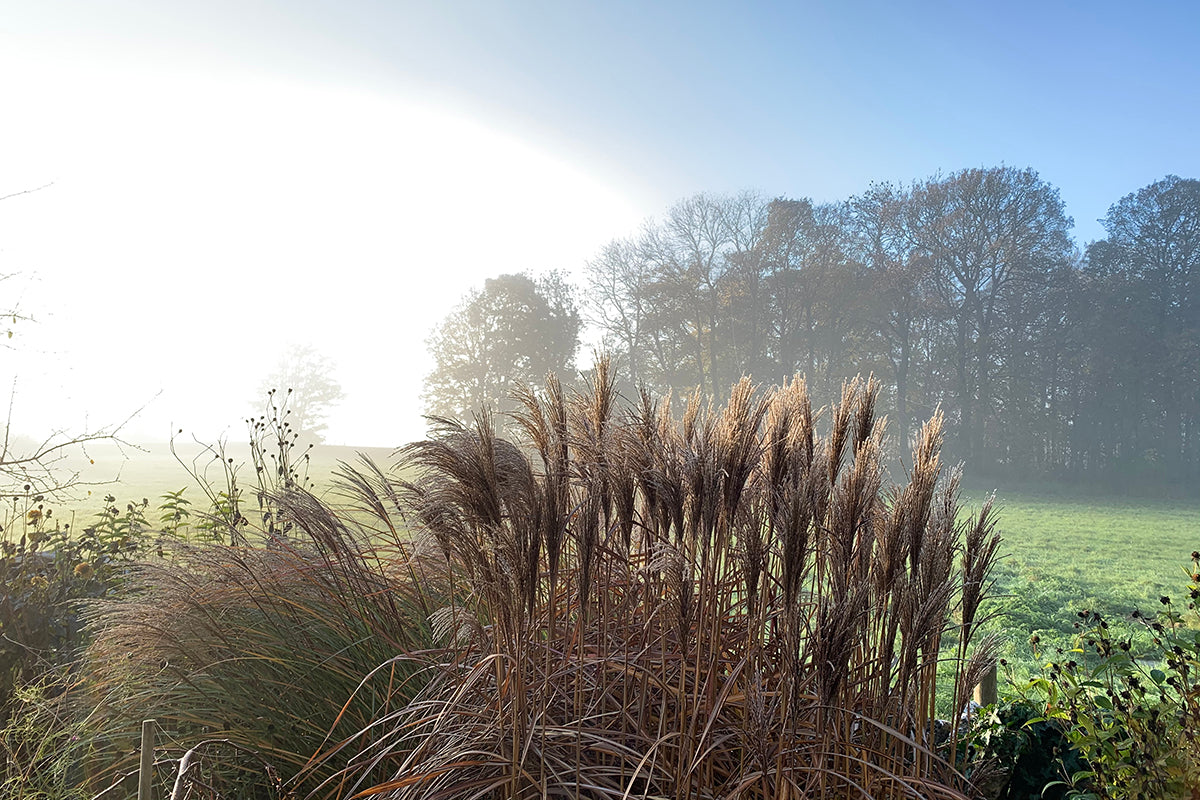Plant profile - Miscanthus

Often known commonly as silver grass, the versatile Miscanthus is a tall grass that has been gracing our gardens for generations, evolving from a Victorian favourite to a modern landscape essential. Victorian gardeners were drawn to variegated varieties like Miscanthus sinensis 'Zebrinus', using its eye-catching yellow-banded foliage as a focal point in their intricate bedding schemes. Fast forward to today, and while 'Zebrinus' remains a popular cultivar, our appreciation for Miscanthus has shifted. Now, it's all about those flowers catching the low early autumn sun, muted autumnal tones, and frost-rimed seed heads that work so well in the cool shortening days of October and November.
As winter draws to a close, it's time for a bit of Miscanthus maintenance. Cut the dried stems down to the base anytime from late February onwards, depending on your local climate. We like to wait until there are signs of new growth arising from the base. Do check before setting to with the secateurs. The base of grasses can be very dry and on several occasions we’ve found hedgehogs still hibernating in a ball of dried leaves and grass stems. If all is clear, the cuttings can go straight on the compost heap although for a natural and attractive mulch, cut them into short lengths and spread them around the base of the plant.
In the Genus garden we have two stands of Miscanthus in the western edge of the garden where the low evening sun creates a halo of light around the flowers and stems. With its multi-season appeal this grass has become a cornerstone of modern garden design and is an important element of ‘prairie style’ planting championed by designers such as Piet Oudolf, Noel Kingsbury, and Nigel Dunnett.
Needing an open, sunny spot in your garden, Miscanthus are surprisingly adaptable. Whether on sandy soil or clay, they can usually make themselves at home. Avoid waterlogged winter soil. Young plants are especially vulnerable, often rotting before they establish a strong root system. A spring planting can mitigate against this.
Our favourite varieties are ‘Silberfeder’ growing to just over 2 metres with green leaves and a silver central rib, ‘Flamingo’ with dark pink flowers and Miscanthus x giganteus which grows to an enormous 3.5 metres and makes a great screen with its green leaves and silver mid-rib, though it rarely flowers.







